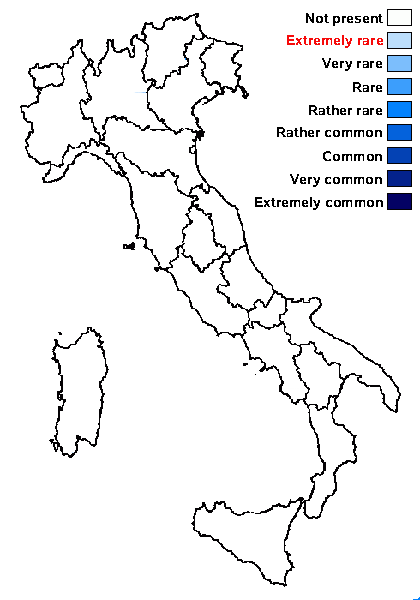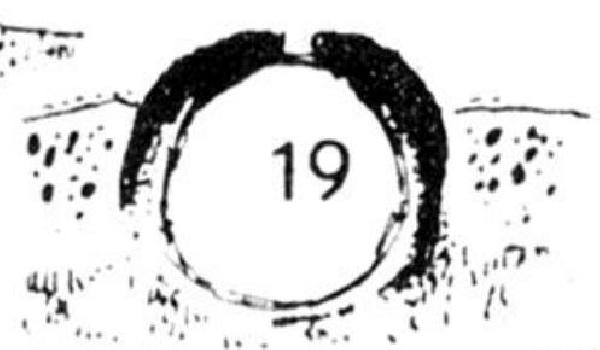Verrucaria fraudulosa Nyl.
Flora, 64, 12: 181, 1881
Synonyms:
Distribution:
Description: Thallus crustose, episubstratic, areolate, sharply delimited, the areoles obtusely angular, usually contiguous, flat to slightly convex, 0.3-1(-1.5) mm wide, grey-brown to dark brown or brown-black, dull, more or less smooth, the steep side-walls and the margins pale. Cortex paraplectenchymatous, poorly developed, the algal layer filling most of thallus; medulla without a black basal layer. Perithecia marginal or located between areoles, c. 2/3 immersed, the apices hemispherically to conically projecting 0.2-0.3 mm across. Involucrellum homogeneously 30-40 µm thick, contiguous with exciple, extending to base-level and more or less incurved beneath the exciple; exciple subglobose, 0.2-0.3 mm wide, the wall colourless to brown; hamathecium of periphyses and periphysoids, interascal filaments absent; hymenial gel hemiamyloid, I+ red (I+ blue at very low concentrations of I), K/I+ blue. Asci 8-spored, narrowly clavate, I-, fissitunicate, the wall thickened above, Verrucaria-type. Ascospores 1-celled, hyaline, narrowly ellipsoid, 13-18 x 6-7.5 µm. Photobiont chlorococcoid, the cells arranged in vertical columns. Spot tests: K-, C-, KC-, P-, UV-. Chemistry: without lichen substances.Note: a poorly known species found on steeply inclined surfaces of more or less calciferous rocks, known for Central Europe and from scattered localities in the Alps (outside Italian territory), and there from the subalpine to the alpine belt. It probably belongs to the Verruculopsis lecideoides-aggregate.
Growth form: Crustose
Substrata: rocks
Photobiont: green algae other than Trentepohlia
Reproductive strategy: mainly sexual
Poorly known taxon in need of further study

Predictive model
Growth form: Crustose
Substrata: rocks
Photobiont: green algae other than Trentepohlia
Reproductive strategy: mainly sexual
Poorly known taxon in need of further study

Predictive model
 INDEX FUNGORUM
INDEX FUNGORUM
 GBIF
GBIF


